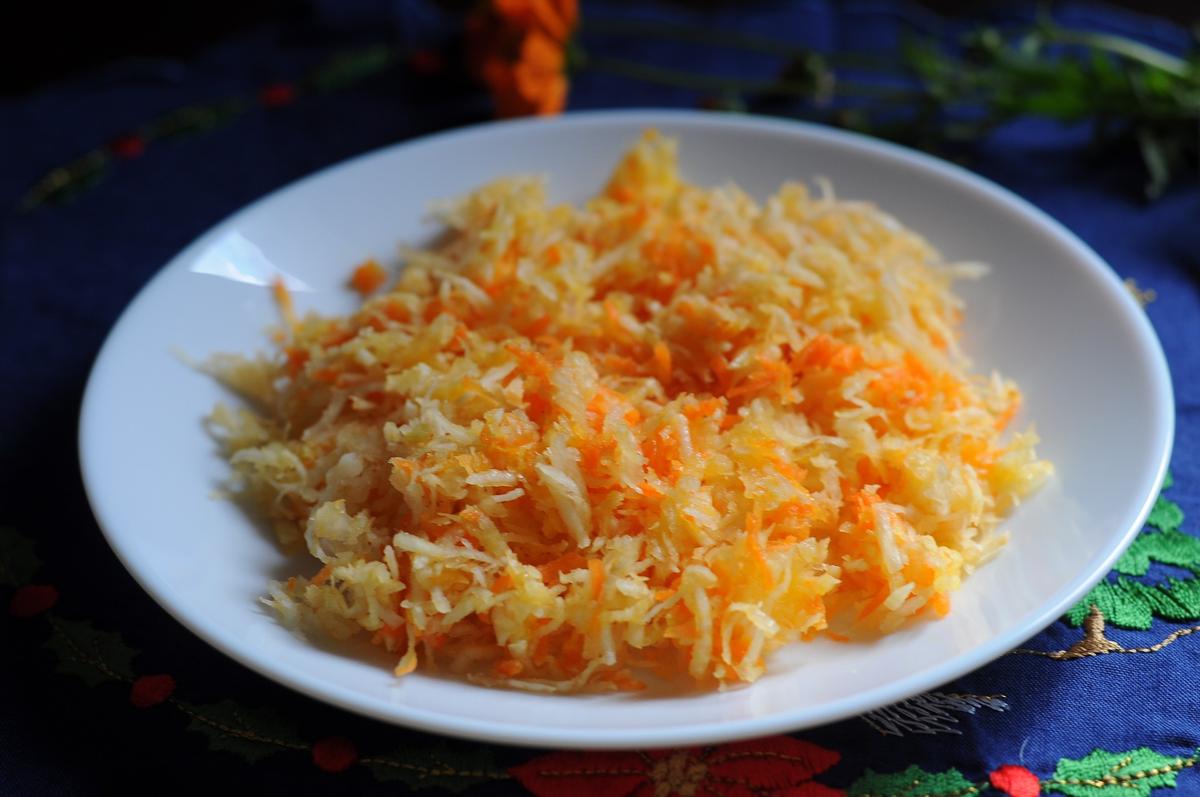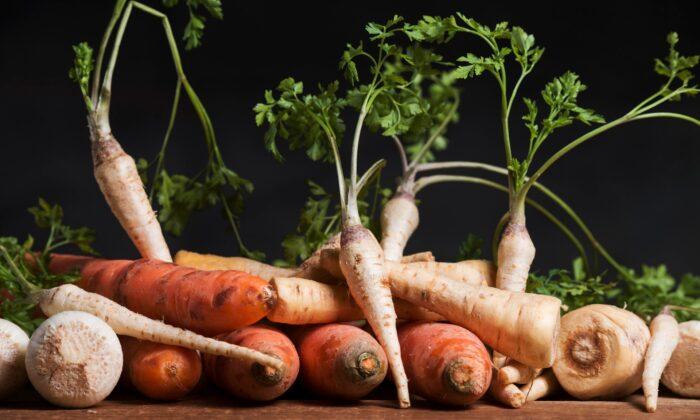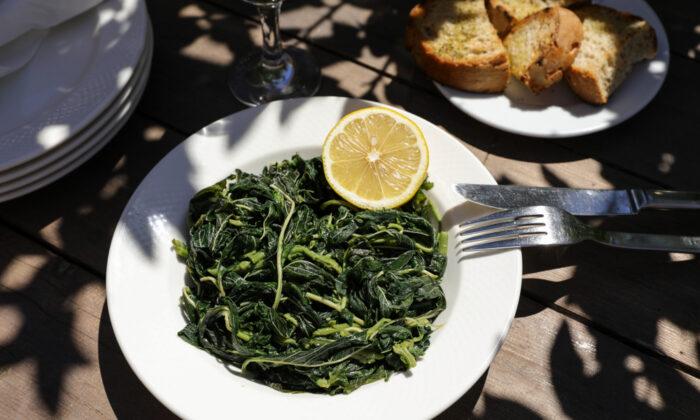The village is covered in a blanket of snow so thick you can build labyrinths from door to door, on bridleways and pathways, raising snow forts or small igloos on the way—little retreats in a rural wonderland. Inside, a fire crackles in a rustic terracotta stove, drawing pictures in the embers.
These are some of the sounds and images that pop into my mind when I recall childhood in Romania. I was just six years old when I learned my first recipe. When I close my eyes, I am transported.
The kitchen hums, clatters, breathes a potpourri of flavors. Like magic, I hear her calling:
“Mihaela, come in here!”
Hurray, I think. I get to help.
“Would you like to learn how to cook?” my grandmother asks, in her somehow stern yet gentle voice.
I don’t answer. I just stare.
“Here,” she says, unfazed, handing me a parsnip. “Grate this on the smallest holes of the box grater. And don’t cut yourself! Be careful!”
I do as I’m told—a monotonous, repetitive strum on the grater that feels like it takes hours instead of a mere five minutes. “Done.”
She smiles (and how I miss that smile) and points to a bowl full of all kinds of root vegetables: celeriac, carrots, parsnips, and parsley root.
“You are making a winter vegetable root salad. Grate them all!” she commands.
I start grating again, thinking I’d rather knead the bread dough my grandma is kneading.
“You think this is easier?” she asks. She had a gift, my grammy did. She could read my mind.
“Here, give it a go,” she invites me.
The dough feels cold and dusty under my palms. I try to fold it, but my skinny arms give in after a few seconds.
“I'll grate the veggie roots, Grammy,” I surrender.
And she smiles again, and I grate for what feels like forever until my right arm goes numb. But I do not stop until all the vegetables—two large carrots, one parsnip, one parsley root, and a half of a celeriac—end up in a pile of white and orange angel hair.
“What do I do now, Grammy?” I ask.
“You season and mix, of course,” she replies with that smile, one that still flashes before my eyes in dreams and in the Madonna icons adorning the altars of every church here, on Crete, where I moved after 17 years in Germany to be closer to Romania, my birthplace.
“Here’s sunflower oil, salt, pepper, and lemon juice,” she says, lining them up before me like soldiers. “Be mindful: Add a little of each, mix, taste, and repeat until it’s perfect.”
“But what if I mess up?” I ask.
“You won’t,” she answers. “I trust you.”
A Winter Tradition
I don’t remember how long it all took, especially for the skinny child I was back then. Even today, I find the preparation annoying.But despite the tedious work, this salad is now a tradition in my home every winter. I follow the same long process—grating, seasoning, mixing, and tasting. I want to get back that childhood flavor every time: It’s earthy, pungent, vibrant, and intense, but it leaves a joyful aftertaste, like a good wine. It surprises you at first, but it leaves you longing for more.
Sure, it’s an acquired taste, but one worth trying, especially in the winter when you need a substantial boost of vitamins and minerals. This salad is a powerhouse: Carrots are full of vitamin A; parsnips and parsley roots supply magnesium, folate, and vitamin C; and celeriac is high in fiber, vitamin B6, phosphorus, potassium, and manganese.
If you cannot find parsnips and parsley roots, add more celeriac to make up the difference. You won’t achieve the same flavors—nor the same medley of vitamins and minerals—but the taste will be close to similar. Feel free to add a grated apple to the mix if you are in the mood to be adventurous.
For the dressing, you can use vinegar instead of lemon juice, as we did some winters when we couldn’t find lemons at the market. You can also dress the salad with mayonnaise instead of the oil and lemon juice, as the typical Romanian recipe calls for. But I have an egg allergy and prefer vegan food anyway, and I usually prepare the salad, just as my grandma used to, during the Eastern Orthodox Nativity Fast, which involves abstinence from meats or other animal products, alcohol, and in strict cases, even oil.
Serve this salad as a starter, or a side dish for pork roast or poultry. You can even stuff it on top of a sausage in a hot dog bun.
And a special note: This recipe is different in every household. There are no rules set in stone. But to me, if it’s not close enough to my Grandma Victoria’s recipe, it’s not right.

Romanian Winter Root Vegetable Salad (Salata de Cruditati)
This salad will keep in the fridge for five days and in the freezer for up to eight weeks.- 2 large carrots
- 1 parsnip
- 1 parsley root
- 1/2 celeriac
- 4 tablespoons sunflower oil (or replace with a mild, clear oil of your choice)
- Juice from 1 lemon (or 1 tablespoon clear wine vinegar)
- Salt and pepper to taste
Season with oil, lemon juice, and salt and pepper to taste. Mix well and refrigerate for an hour before serving.






Friends Read Free